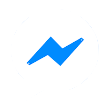 We know that routine is critical for kids with ADHD. But it’s also key for adults. “Without routines, their lives become chaotic,” according to Terry Matlen, ACSW, a psychotherapist and author of Survival Tips for Women with AD/HD. She added that many adults with ADHD simply don’t have an internal sense of structure.
We know that routine is critical for kids with ADHD. But it’s also key for adults. “Without routines, their lives become chaotic,” according to Terry Matlen, ACSW, a psychotherapist and author of Survival Tips for Women with AD/HD. She added that many adults with ADHD simply don’t have an internal sense of structure.
“Adults with ADHD are highly distracted, impulsive and cannot tolerate boredom,” Matlen said. This makes it difficult to accomplish tasks, whether at home or at work. Structure, however, helps adults perform everything from daily chores to demanding projects at work, she said.
It also helps adults with ADHD get moving, said Stephanie Sarkis, Ph.D, a psychotherapist and author of 10 Simple Solutions to Adult ADD. “Inertia is the enemy of people with ADHD,” Sarkis said. She likens it to Newton’s first law. “An object that is at rest will stay at rest unless an external force acts upon it. This is especially true for people with ADHD.”
In short, according to Matlen, “Routines are a way to structure a day and make success possible.”
But people with ADHD tend to eschew structure. Why?
For one, the nature of ADHD makes setting and following routines more arduous. ADHD is an impairment in executive functioning. “This makes it difficult for us to organize our time, set deadlines, organize material for a task, and know how long it will take us to complete something,” Sarkis said.
People with ADHD have a love/hate relationship with routine, Matlen said. “ADD adults generally like variety, diversity and novel experiences because their brain needs to constantly be stimulated. Structure, as much as it is needed in the person’s life, can feel frightfully unnatural.”
They also might jump in too fast. According to Jennifer Koretsky, a senior certified ADHD coach and author of Odd One Out: The Maverick’s Guide to Adult ADD, adults with ADHD have good intentions but they “create a complicated routine too quickly. The details of the routine become hard to remember, boring, or tedious, and the person can find themselves thinking that they failed at one more thing despite their best effort.”
But this doesn’t mean that setting up a realistic and reliable routine is impossible. The key is to start small and find what works for you. Below, the experts — who also have ADHD — provide pointers on setting up a successful and sensible routine.
1. Ease into the routine.
According to Koretsky, “It’s often better to add to an existing routine than to try to create a completely new one.” That’s why she suggested adding one task at a time. Then practice this task over and over until it “becomes second nature.”
Koretsky gave the example of a woman who forgets to take her medication. She already has a morning routine. After she wakes up, she feeds the cat and makes lunch for her kids. She can slide her medication into the slot between feeding the cat and making the lunches. “Once she practices this for a while and it becomes a habit, she can consider adding another task to her morning routine.”
2. Imagine your ideal on paper.
If you’re just starting out, Matlen suggested “getting a notebook and writing down an ideal schedule, from morning to night [with] one [schedule] for workdays [and] one for non-work days [such as] weekends and holidays.”
In addition, have a good idea of the time each task takes, she said. For instance, how long does it take you to do laundry, drive your kids to school or get to work? You might have to time yourself to find out.
This is important, because many people either under- or overestimate their time. “With overestimating, it can feel overwhelming, thus causing us to procrastinate,” Matlen said. “When underestimating, it helps us to realize we do need to assign more time to the task.”
3. Keep a detailed schedule. “
Make sure every 30 minutes of your schedule is blocked out,” Sarkis said. “This includes scheduling free time and social time too!”
4. Use visual cues.
People with ADHD respond well to visual cues, according to the experts. For instance, Sarkis suggested color-coding your schedule. “Make work or school hours blue, errand time red, commuting time green, and so on.” Or you can use whiteboards to write down your daily schedule and long-term plans, Matlen said.
5. Use checklists.
Matlen’s clients use checklists throughout their days to stay on track. She uses an LED-lit “boogie board” to help her daughter remember what she needs for school. “Next to each item is a box and she checks each one as she gathers her backpack, lunch, etc.”
6. Use what’s best for you.
“The key is using techniques that work for you,” Matlen said. This might be a daily paper planner, a voice recorder, talking watch, computer reminders or software programs, she said. “If you’re a techie person, computer reminders and software programs are great. If you’re more of a ‘paper’ person, write your routines in a planner and keep it with you at all times.”
7. Reframe routine.
“I think adults with ADD tend to see routines as impinging on their sense of freedom. Structure and routines, in the end, actually free up the person,” Matlen said. She suggested reminding yourself that structure is a support, not a hindrance. “Remind yourself that these are tools to help you, not to make your life miserable.” They help you work more efficiently so you can get things done and have more time for the projects you enjoy, she added.
8. Know your rhythm. “
Know what time of the day you’re most productive and put into your routine the things that require the most brainpower during those times,” Matlen said. For instance, if you’re not a morning person, she said, do everything you need for the next day at night. This might include packing your own lunch (or your kids’), laying out what you’ll wear and having your briefcase ready.
9. Get help.
“Seek out the guidance of counselors, coaches, organizers, or trusted friends and family members,” Sarkis said.
Creating and following a routine when you have ADHD requires effort and time. “It can take months to get into a rhythm, a groove, to learn and remember to use these systems,” Matlen said. But it’s worth it. As Sarkis said, “routines and structure are essential to the well-being of an adult with ADHD.”
 Margarita Tartakovsky, M.S. is an Associate Editor at Psych Central and blogs regularly about eating and self-image issues on her own blog, Weightless.
Margarita Tartakovsky, M.S. is an Associate Editor at Psych Central and blogs regularly about eating and self-image issues on her own blog, Weightless. Like this author?
Catch up on other posts by Margarita Tartakovsky, M.S. (or subscribe to their feed).
Last reviewed: By John M. Grohol, Psy.D. on 1 Apr 2013
Published on PsychCentral.com. All rights reserved.
APA Reference
Tartakovsky, M. (2013). 9 Tips for Creating a Routine for Adults with ADHD. Psych Central. Retrieved on April 3, 2013, from http://psychcentral.com/blog/archives/2013/04/02/9-tips-for-creating-a-routine-for-adults-with-adhd/


 شارك عبر الماسنجر
شارك عبر الماسنجر
